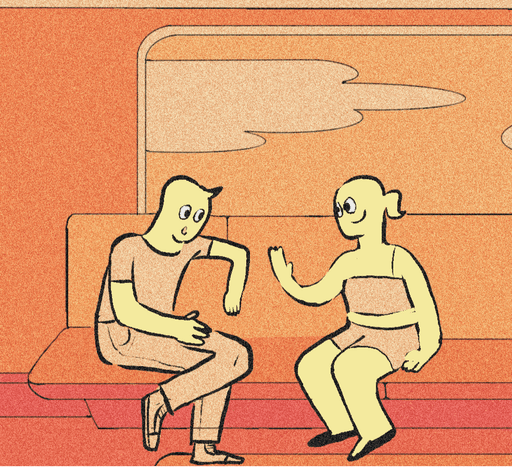Mingle – A climate solution
Contributions:
The Team:
Rhea Chandy (myself)
Ruchira Biswas
Vidhi Mishra
Timeline:
4 weeks
Transport partners
Jonathan Rewers, Chief Strategic Officer, SFMTA
Michelle Robertson, Principal Marketing Rep. , BART
Faculty
Marc O'Brian
Mingle is community platform that fosters friendship, safety and fun for public transport.
The Problem
The Outcome
This project began with a bold vision for the future: to reimagine public transit as a thriving community space by 2040.
Coupled with the adoption of hybrid and electric vehicles and carpooling initiatives, Project Drawdown shows the potential for huge climate wins.
Our goal with Mingle is to encourage a sense of connection without compromising safety or privacy. We identified key features to make this possible:
Route-Based Companions
Riders can see familiar faces on their route, with companions shown above the route map. This gives a sense of comfort without requiring personal details.
Personalized Avatars
To protect privacy while adding a human touch, each user chooses an avatar based on their initials, making interactions feel more engaging while remaining anonymous.
Live Community Channels
Users can join channels in real time based on shared interests, shared destinations, see live updates from their fellow passengers and report non-emergency issues.
Before diving into solutions, we wanted to understand the overall problem space and the lived experiences of transit users.
I conducted interviews with 14 public transit users, and to explore their journey challenges, from barriers to entry and convenience to feelings of isolation to safety concerns.
To further validate our problem space, I consulted two Subject Matter Experts (SMEs) from SFMTA and BART, who provided insights into commuter patterns and confirmed key pain points we observed.


Michelle Robertson
Principal Marketing Representative,
BART
Helped us understand BART's role in the region and riders' attitude towards public transit and their community.


Jonathan Rewers, AICP
Chief Strategic Officer.
SFMTA
Gave us insight into the SFMTA's user archetypes. From frequent riders who use SFMTA as primary mode of transport to riders who only take public transit for special occasions like sports games, concerts, etc.
We developed an MVP prototype I framer and tested it with three users in a simulated transit environment to gather initial feedback.
Their insights helped us refine key elements of the interface, we made tweaks for clarity and usability and making adjustments to align with their real-world expectations.
Our initial design focus was on community engagement, but feedback from users quickly highlighted the priority of safety.
Commuters wanted to feel secure, especially when familiar faces were present on the same route. This insight guided our design decisions toward features that prioritize privacy and foster connection without compromising user safety.
My favorite part of this experience was the opportunity to thinking broadly and long-term as a design method.
The Value of Expert Review
Throughout the Mingle project, we relied on qualitative research to uncover the core motivations and behaviors of transit users, gaining insights into what truly matters to them. However, consulting with field specialists allowed us to corroborate our findings with established research and contextualize our insights within a larger framework, giving us confidence that we were addressing real, underlying needs.
Service Design and Contextual Sensitivity
One critical aspect of Mingle’s design involved mapping out the user experience across different contexts—whether users were at the station, on the train, or heading home. Service design allowed us to consider what users would need in each environment and how their behaviors, expectations, and even social norms might shift accordingly. For instance, behaviors at a bustling station differ from those on a quiet late-night train ride. Each setting requires its own set of user interactions and etiquette, and thinking through these “spheres” of behavior helped us design an experience that feels intuitive and context-sensitive.
Redefining Motivational Rewards Through Gamification
An invaluable moment in the project came from our discussion with a gamification expert. Initially, our design included traditional extrinsic rewards, such as points, badges, and discounts, to encourage community participation. However, through expert feedback, we realized that a more intrinsic motivation approach would be more effective and aligned with the project’s goals. Instead of transactional rewards, we focused on fostering deeper engagement by emphasizing intrinsic motivators like the opportunity to make connections, participate in the community, and feel a sense of belonging.








